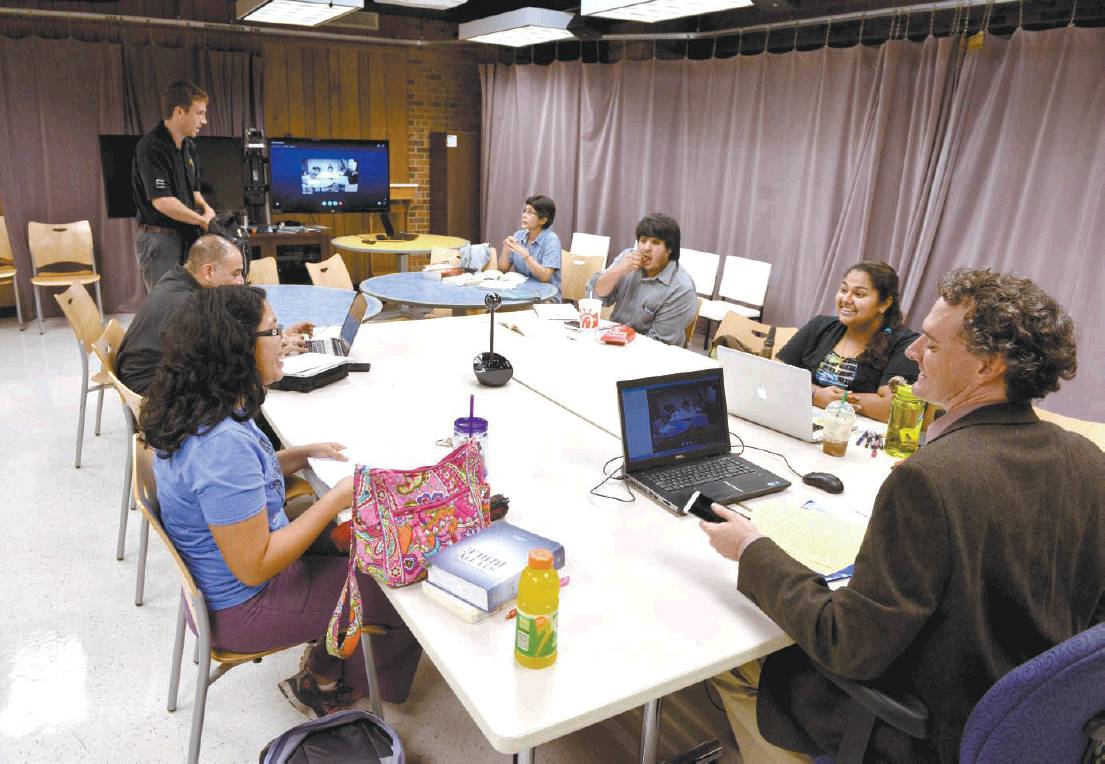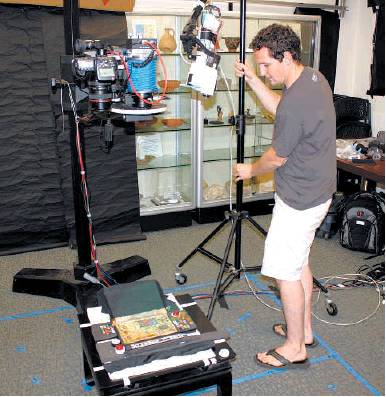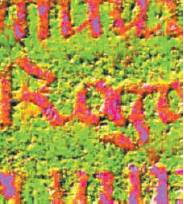Bringing back erased ancient religious texts
St. Mary’s prof gets grant for project
By Elaine Ayala STAFF WRITER
A St. Mary’s University associate professor of theology, creator of a new tool for use in digital archaeology, has landed a $325,000 grant from the National Endowment for the Humanities to resurrect several potentially controversial ancient texts.
For centuries, the erased manuscript, or palimpsest, was lost, said St. Mary’s biblical scholar and digital humanist Todd Hanneken. It was considered heretical by fifth-century authorities.
The Jubilees Palimpsest manuscript contains a copy of the Book of Jubilees, treated as scripture among the Dead Sea Scrolls but rejected by Judaism.
The erased text also contains what’s believed to be the Testament of Moses, which describes a second messiah figure other than Jesus.
The manuscript also contains an Arian commentary on the Gospel of Luke. Early Christian followers of Arius were deemed heretics. The text considered God the Son to be subordinate to God the Father.
None of these items made it into what is now known as the Bible.
But now the six-figure, three-year grant, which isn’t the first that Hanneken’s Jubilees Palimpsest Project has received from the NEH, will enable a team of scholars and students from St. Mary’s to travel to Milan to digitize the documents.
They’ll ultimately work with scholars from the University of Pennsylvania and the University of Notre Dame and share both the technology and the texts with scholars everywhere.
The project has put St. Mary’s in the midst of a new advance in digital archaeology. Hanneken said two separate technologies — spectral imaging and reflectance transformation imaging — were bridged to create the project’s Spectral RTI technology.
While spectral imaging radically improves color resolution, recovering ink invisible to the human eye, RTI technology or texture mapping can uncover the outlines of erased letters in the corrosion of the parchment surface, Hanneken said.
The digital images created will allow scholars to better distinguish the traces of brown ink on brown discolored parchment. That such documents still exist is a testament to the difficult process of turning animal skin into parchment, which had such value in the ancient world that it was erased and reused, rather than destroyed.
Science and technology have caught up with “the limitations of the naked eye,” Hanneken said by phone from Minnesota, where he spends summers. “We can’t tell browns apart, and we can’t see infrared. Other species can see color a lot better than we do. We have three receptors; some species have 12.”
He said the technology will advance knowledge of ancient Judaism and early Christianity. Uncovering what early church leaders erased might reveal texts that “could be challenged” by fundamentalist Christians, he said, but it’s not particularly controversial.
“The (Catholic) Church knows that human beings had a role in interpreting God’s plan,” he said. “The Bible was developed over time, and new revelations would not be viewed as scandalous to Catholics.”
“It would be controversial if I expected the church to adopt such ideas,” he added. “These are ideas Christianity considered and decided against.”
Janet Dizinno, dean of St. Mary’s School of Humanities and Social Sciences, called Hanneken a gifted scholar and his work “groundbreaking.” Aaron Tyler, provost and vice president for academic affairs, called the grant an honor for the school.
“What excites me about this project are the collaborative ways in which Dr. Hanneken is using this innovative technology to bring students and scholars together to explore the frontiers of digital archaeology,” Tyler said.
William Buhrman, chairman of St. Mary’s theology department, said Hanneken’s achievement will expose St. Mary’s “to a large and distinguished international audience of scholars” and promises “to reshape our ability to encounter and understand ancient manuscripts of all kinds.”
“Not only is Dr. Hanneken an exceptional researcher, he is also a very popular and highly respected teacher” who empowers his students, he said.
Hanneken is a graduate of the University of Chicago, Harvard University and the University of Notre Dame who initially studied physics and was on his way to becoming a Jesuit priest before turning to the study of languages and theology.
Hanneken described the effect of the NEH grant as providing “critical mass.”
The project’s guiding principle is to make the digitized images available worldwide for scholars and students. Hanneken hopes to make Spectral RTI software technology readily available for download, too. The technology will be useful to museums, libraries, universities and even the criminal justice system, he said.
The NEH grant will cover the costs for St. Mary’s faculty and students to travel to Milan for a month to create a collection of advanced images and then to Penn and Notre Dame to work with scholars there.
They’ll also demonstrate the technology at conferences and train others to use it.
Unlike the Dead Sea Scrolls, which Harvard sat on for decades, controlling them and ultimately damaging them, the Jubilees Palimpsest Project’s recovery of documents will be publicly shared, Hanneken said.
It used to be that only scholars and students at Ivy League universities had the opportunity to study such texts.
“Starting now, students at St. Mary’s will have the same level of access,” he said. eayala@express-news.net Twitter: @ElaineAyala




